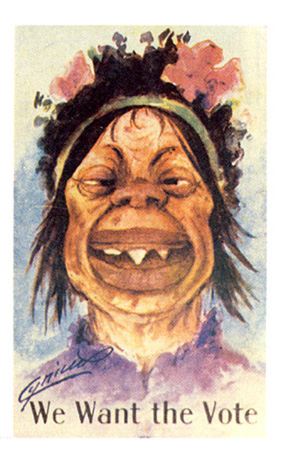
We Want the Vote, NOLWS, 1912, Museum of London
By creating an image with darker skin, cartoons sometimes had racist undertones.
Anti suffrage organizations also portrayed women as inferior through characterizations of women seeking the vote as beastly, decrepit, and manipulative.

We Want the Vote, NOLWS, 1912, Museum of London
By creating an image with darker skin, cartoons sometimes had racist undertones.

The Easiest Way, Palczewski Suffrage Postcard Archive,
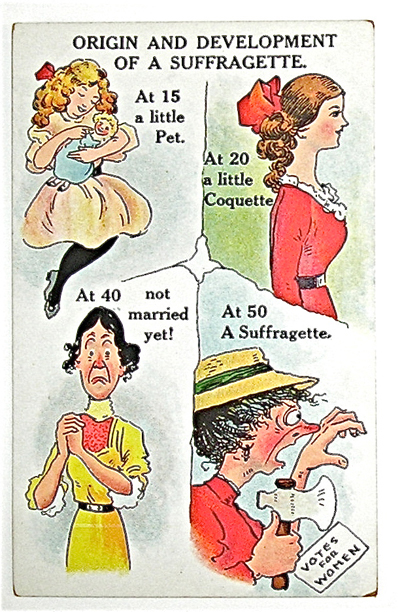
Origin and Devlopment of a Suffragette, Women's Suffrage Memorabilia, The Week
Anti-Suffrage organizations suggested that women voting defied female beauty and virtue.
Postcards of Leaders, NUWSS, Norman Watson
In response, ASL reminded the public of the erudite and elegant nature of their virtuous leaders.
“ Cards showing suffrage leaders were sold at suffrage shops and branches and distributed for publicity. Thus, the power of postcard imagery was harnessed by the women to publicise their perspective and to divest themselves of the damaging characterisations which clung to their public presence."
Norman Watson, Text and Imagery in Suffrage Propaganda
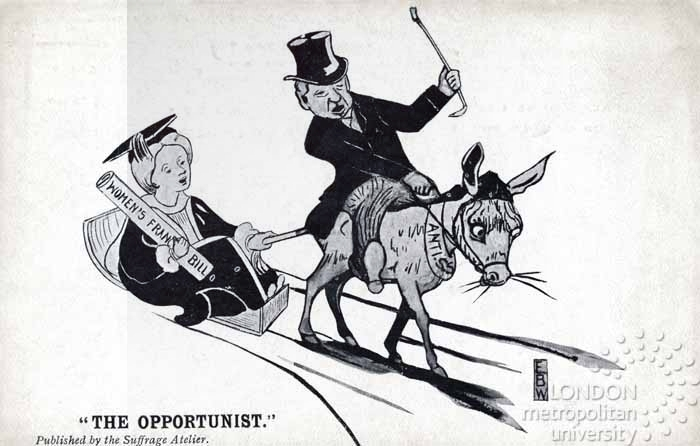
The Opportunist, Suffrage Atelier, London Metropolitan University

The ASS as Portrait Painter, Suffrage Atelier, London Metropolitan University
SA's cartoons offered bold counterattacks, by associating anti-suffrage with the incompetence of jack-asses.
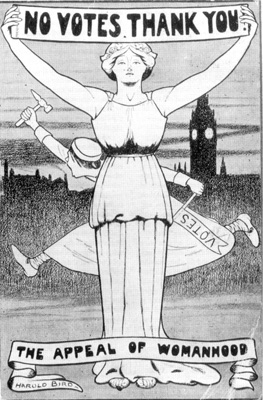
The Appeal of Womanhood, National League for Opposing Women's Suffrage, Radford University
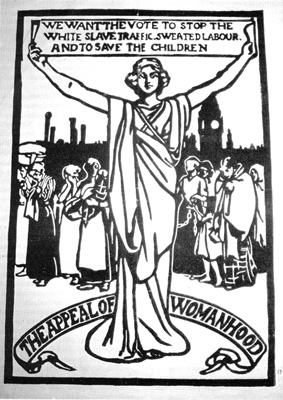
The Appeal of Womanhood 1912, Louise R. Jacobs (SA) , Museum of London
SA refused to allow women to be ridiculed. The women in Jacobs' poster retain their dignity in unifying for a rightful cause.
These two images of a woman in classical robes offer a succinct juxtaposition of the tension between pro-suffrage and anti-suffrage artwork.
NLOWS’ woman resists the vote on behalf of all womanhood while SA’s woman, a riposte to the original, demands not only the vote, but an end to unethical labor practices. She stands in front of a mother, a laundress, a prostitute, and others, rejecting the monolithic notion of womanhood proposed by NLOWS.
Posters featuring highly-educated women cast women as highly informed citizens.